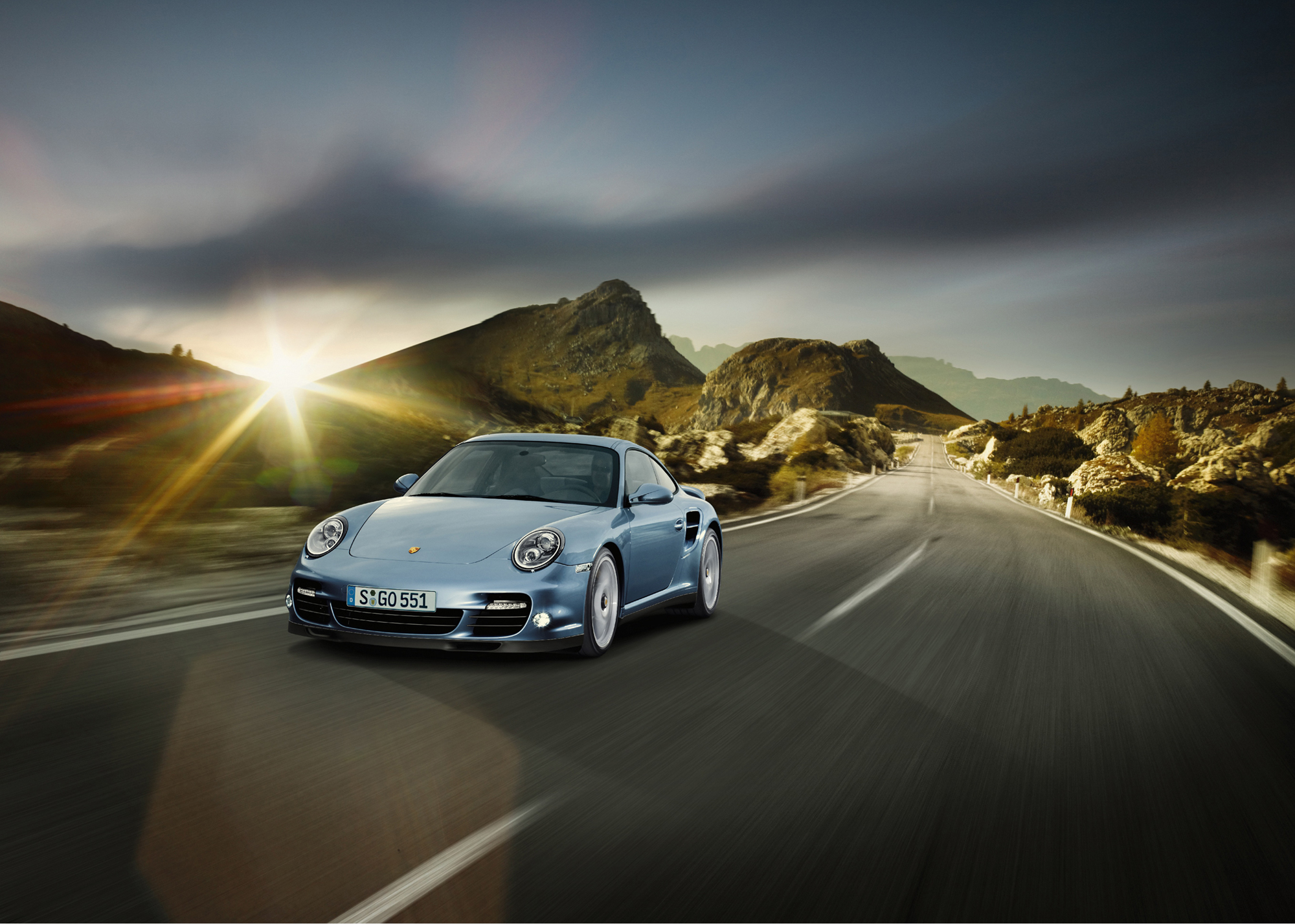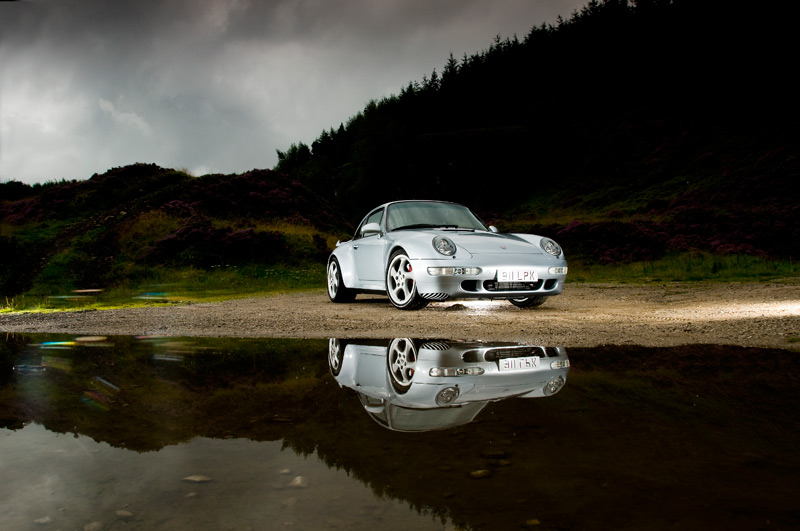""A supercar you can use everyday." The 911, in its various guises has always aimed for that accolade, but, the 993 Turbo was the ultimate combination of luxury, performance and excitement. Benefitting from an all-new multi-arm rear suspension, which reduced the tendency "

New (Favourite) Porsche Turbo

OK: so it goes without saying that the Porsche Turbo is probably the most iconic performance car brand in Automotive history. So, when the company releases a new edition of the Turbo, it’s going to cause waves.
The 2010 Turbo S, which will be unveiled in at the forthcoming Geneva show, will boast power figures of 530 hp and 516 lb-ft of torque. And along with these new power figures it looks as if performance has gone through the roof.
The company reckons that the 911 Turbo S accelerates from a 0-62 mph (0-100 km/h) in 3.3 seconds and reaches 124 mph (200 km/h) in 10.8 seconds. Top speed is 196 mph (315 km/h). Lightweight and fade-resistant Porsche Ceramic Composite Brakes will) provide the same sublime anchoring, too.
The usual elements are there of course : the rear-mounted six-cylinder ‘boxer’ engine boosted by two turbochargers with something called ‘variable turbine geometry’. And despite its significant increase in power and performance, Porsche reckon it will return 24.8 mpg Combined (11.4 l/ 100 km) –exactly the same, that is, as the existing straight ahead Turbo. Serious tech has been bought to bear to squeeze 30 more horses for identical fuel consumption.
The first Turbo S in five years comes with new standard equipment, including Dynamic Cornering Lights, 19-inch RS Spyder-style wheels, adaptive sports seats, cruise control, a CD/DVD changer and two-tone leather.
- The S comes in pretty cabrio form too
We think this beauty approaches the utilitarian loveliness of the 993 Turbo (Below), favourite turbo to date.
What’s your favourite Turbo?

CLICK TO ENLARGE
















That's certainly a stunning Porsche. I've always wondered why American manufacturers insist upon using pushrod V8s to deliver the sort of power developed by the flat-sixes in the Porsches over the years. Yawn.
Variable geometry turbochargers were used back in the 80s by Chrysler in their Dodge Omnis. For those unfamiliar with this technology, these turbos feature adjustable fins on the compressor wheel. At lower power (read: vacuum/boost reference from the intake manifold), a solenoid activates a mechanism which changes the geometry of the compressor wheel. This gives the blades more “bite” to move more air at lower compressor speeds. As manifold pressure increases (boost), the solenoid again adjusts the geometry to reduce this bite and flow more air. This technology has also been applied in large diesel for some time as well. It's added complexity to a system already under pressure (pun), but it's a smart move for sure.
My favorite turbo? It's hard to choose. I adore anything running the formidable Mitsubishi 4G63T engine – Eclipse, Talon, Lancer Evolution, Galant VR4. These lumps have been known to handle double their factory delivered 220bhp through larger turbochargers and bolt-on fuel system improvements. Today, there are 2.0L 4G63Ts pushing beyond 1000whp. It's a solid mill and one that I think will stand as a classic moving forward.
Beyond that, it's hard to choose a favorite turbo model when you've got the rally bug. Two words: Group B. Sport Quattro? Delta Integrale S4 Evo? Rs200? Fantastic cars.
Thanks for the technical background. An early Turbo Fave of mine was the RS Turbo http://img.photobucket.com/albums/v74/mungus/B2…
Was a wheezy, wobbly beast back back in the early eighties it ruled the streets of the London suburbs. Pure aspiration and a little pointless, but it turbo-charged the automotive dreams of my peer group…
MikeF